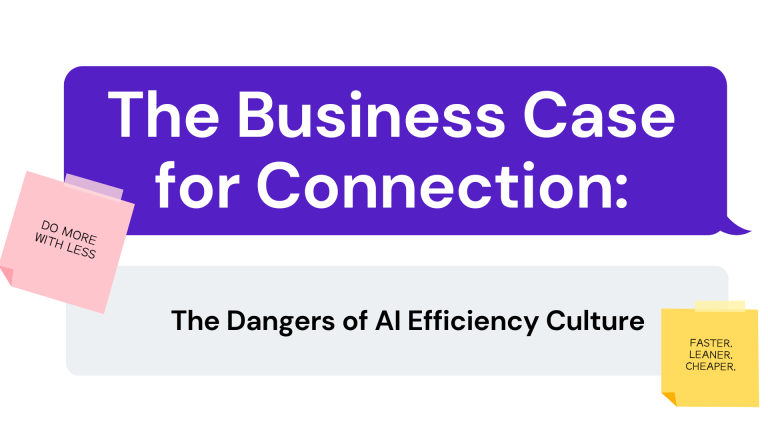
Measuring the ROI of an employee engagement platform (like CultureBot) is not as difficult as it might sound. Employee engagement matters, and it matters a lot, be it a startup or a multinational enterprise. For more engaged the employees, the more likely they are to stick with an organization.
First, let’s explore why a tool like CultureBot even exists…
“An average case (middle of the road projection at 3% retention lift) for an organization with 500 employees results in an ROI of nearly $300,000 in year one alone.”
Table of Contents
The Price to Pay for Disconnected Teams
There are many reasons to think about implementing an employee engagement solution, including:
#1 Suboptimal Employee Retention – By fostering a positive workplace culture and acknowledging special occasions, CultureBot can help reduce turnover rates. Additionally, CultureBot enhances employee engagement through automated celebrations, peer recognition, and interactive games, leading to a more connected and motivated team.
#2 “Silent Quitting” and Low Productivity – Engaged and recognized employees are more productive, contributing to overall business success.
#3 Wasted Human Ingenuity & Time – Automating HR tasks like surveys, feedback collection, and onboarding saves time and reduces administrative burdens on folks in People Operations type roles.
In fact, after surveying over 20 teams using CultureBot over the last 12 months – we’ve seen, on average, a reported net morale increase of 15%. eNPS is proven to directly lift retention (and even sales)…
Businesses with higher than average engaged employees result in 27% higher profits, 50% higher customer loyalty, and a 50% improvement in sales.
Studies have also shown that more engaged employees are also:
- More innovative
- Better leaders
- Open communicators
- More collaborative
- Adapt well to change
- Pursue development opportunities
- Go the extra mile
Below you’ll find a spreadsheet screenshot extrapolating what this lift in employee net promoter score/morale will do to organizations at scale. For an organization of 100 employees, a 1% boost in retention results in a $17,600 ROI in year one of implementing an employee engagement solution, an average case (middle of the road projection at 3% retention lift) for an organization with 500 employees results in an ROI of nearly $300,000, and for organizations that performing the highest at the scale of 1,000 employees – the ROI is nearly $1M per annum.
How about that impact, CFO?
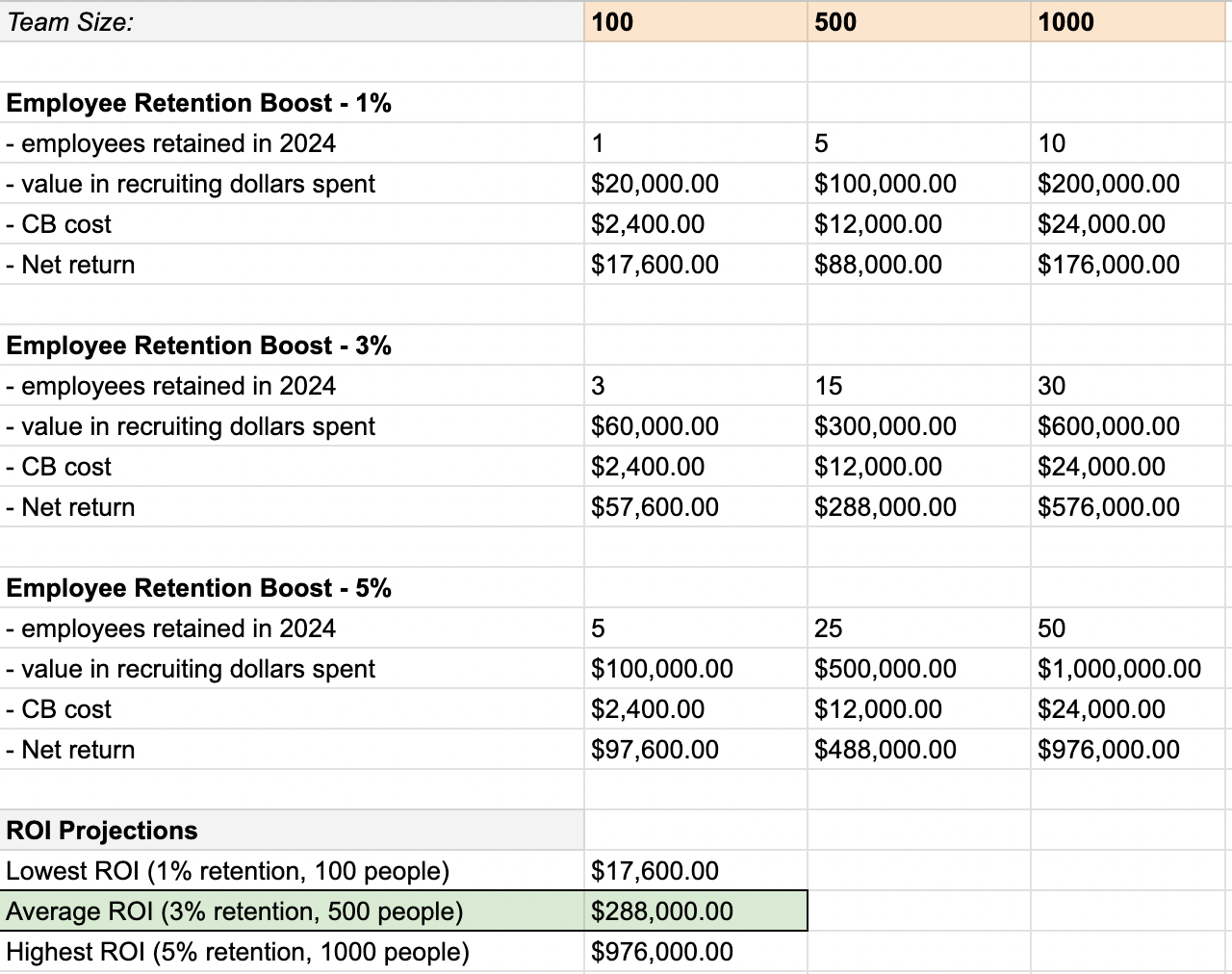
So, now that we’ve calculated the ROI of an employee engagement solution, how do we optimize for the top tier of retention improvements (5%+)?
The Additional Hidden ROI of Human Hours Saved
An additional component to the ROI equation for an employee engagement solution is also “how much time does this save the People Operations team each month?” Well – if you run the numbers, that starts to add up, quickly – especially as the size of the team grows. As an example, let’s take some conservative numbers on hours it would take a small to mid-sized team to execute on the following employee connection/buy-in/bonding programs on a daily/weekly basis:
- Automation of birthdays & work anniversaries: 2.5 hrs/week
- Automation of holidays & DEI days: 1.25 hrs/week
- Automation of peer rewards/fulfillment: 3.75 hrs/week
- Employee connection facilitation/tracking: 3.75 hrs/week
- Automation of onboarding messages: 3.75 hrs/week
- Automation of team health surveys: 30 hrs/month
- Time saved organizing team games/fun: 5 hrs/month
- Hourly cost of human time: $100/hr

Actionable Ways to Drive Employee Engagement on a Remote Team
Using a platform that meets your employees where they’re already spending most of their day (aka, Slack) is the first step in the journey to leveling up your core remote culture. Let’s explore some core ways a Slack-based platform for employee engagement can do just that…
#1 Instilling a culture of appreciation & recognition

- Aligning public praise/shoutouts with your company values
- Setting up a “shoutout day” – where employees are reminded to share praise with one another (for example, some teams call this “Feedback Friday’ – where employee share highlights of their week before the weekend)
- Setting up a next-level gift catalog to incentivize public praise sharing – allowing your employees to have “point allowances” they can use to share points with each other, and in turn, exchange the points for gifts (such as gift cards, company swag, or more meaningful gifts like “value patches” for coats, etc.)
- Setting up birthday & work anniversary gifts – nearly everyone loves feeling celebrated in a special way on their birthday
- Sending a private note on employee birthdays & work anniversaries
- Automating your DEI/awareness day calendar – this can help all of your employes feel seen and recognized for who they are!
#2 Driving team engagement & morale
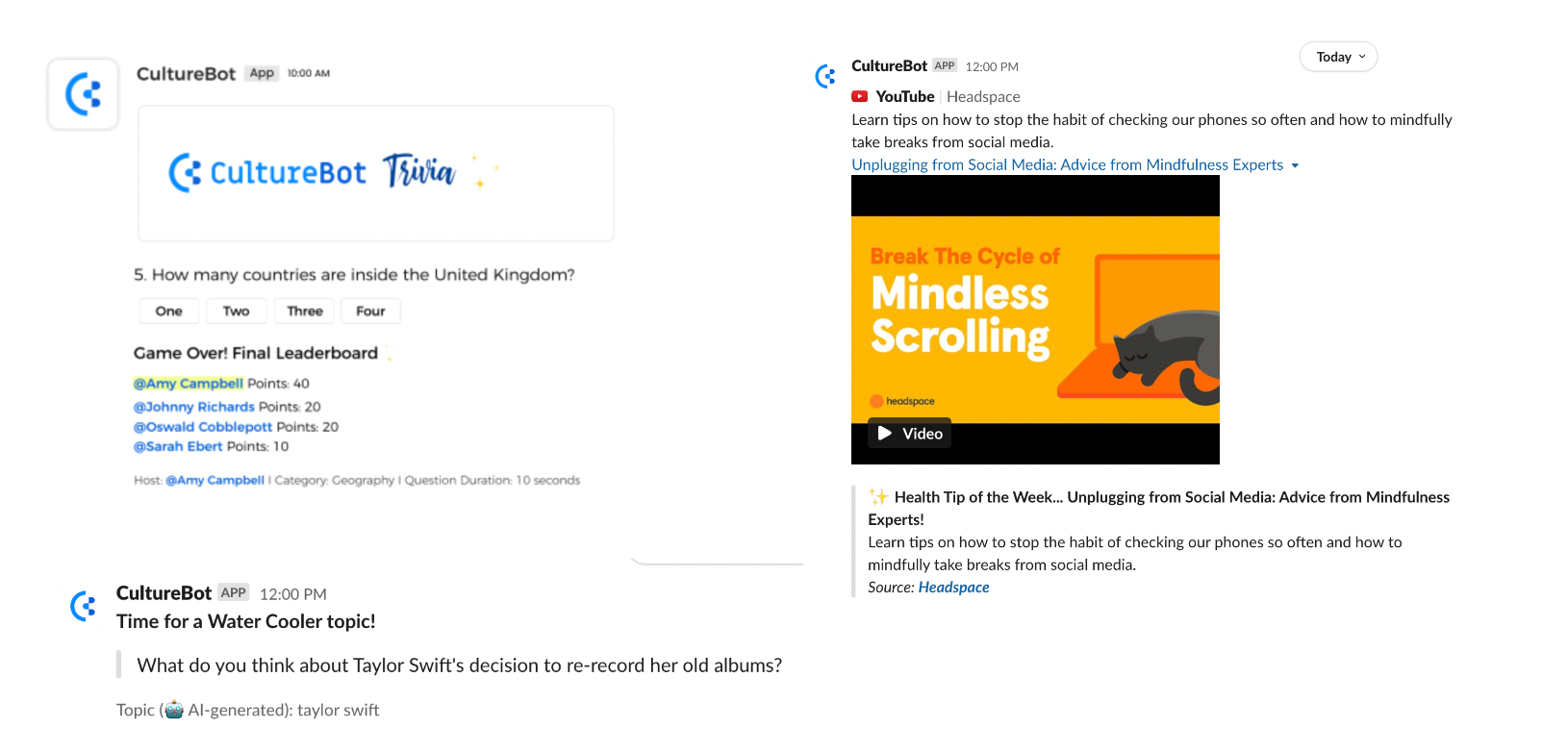
- Aligning social channels with employee hobbies & interests – the best way to drive engagement on a remote team is by creating hyper-specific #social-{topic-name} channels, and then setting up conversation starters to go off into those channels once or twice a week. Remember – the more specific, the better (for example, create a channel for your team’s swifties called #social-swifties and let loose a CultureBot AI water cooler instance to just talk about new taylor swift topics twice per week). Remember to only market the new social channels to those who actually care about those topics – you want smaller social channels that have more engagement in them more often, not less!
- CEO introduction lotteries – a great way to get your top leader involved with the day-to-day frontline of your business. Set these up and your CEO will meet a new person or group of people on a cadence of your choosing.
- Actionable health & wellness programming – this is a great way to automate some of the more “fringe” parts of developing a thoughtful remote culture. Choose from various categories of wellness (e.g. start with some of the more bit-sized video-based tips, such as mindfulness, energy breaks, and stress relief)
- Renaming the bot to be company branded – this just makes everything feel a bit more personal. The best teams use their mascot in the name!
- Setting up an employee lottery – recognize a group or department of employees for a job well done with a lottery that automatically runs on a pre-determined schedule
- Setup a water cooler “virtual scavenger hunt” – a great way to engage your remote team by getting them to “hunt” for specific items in their house to share with one another.
- Remote team games: these are great for team bonding – build trust and camaraderie with your teammates by trying out games like trivia, DoodleDash, and even Fishbowl.
#3 Gauging the “pulse” of your organization
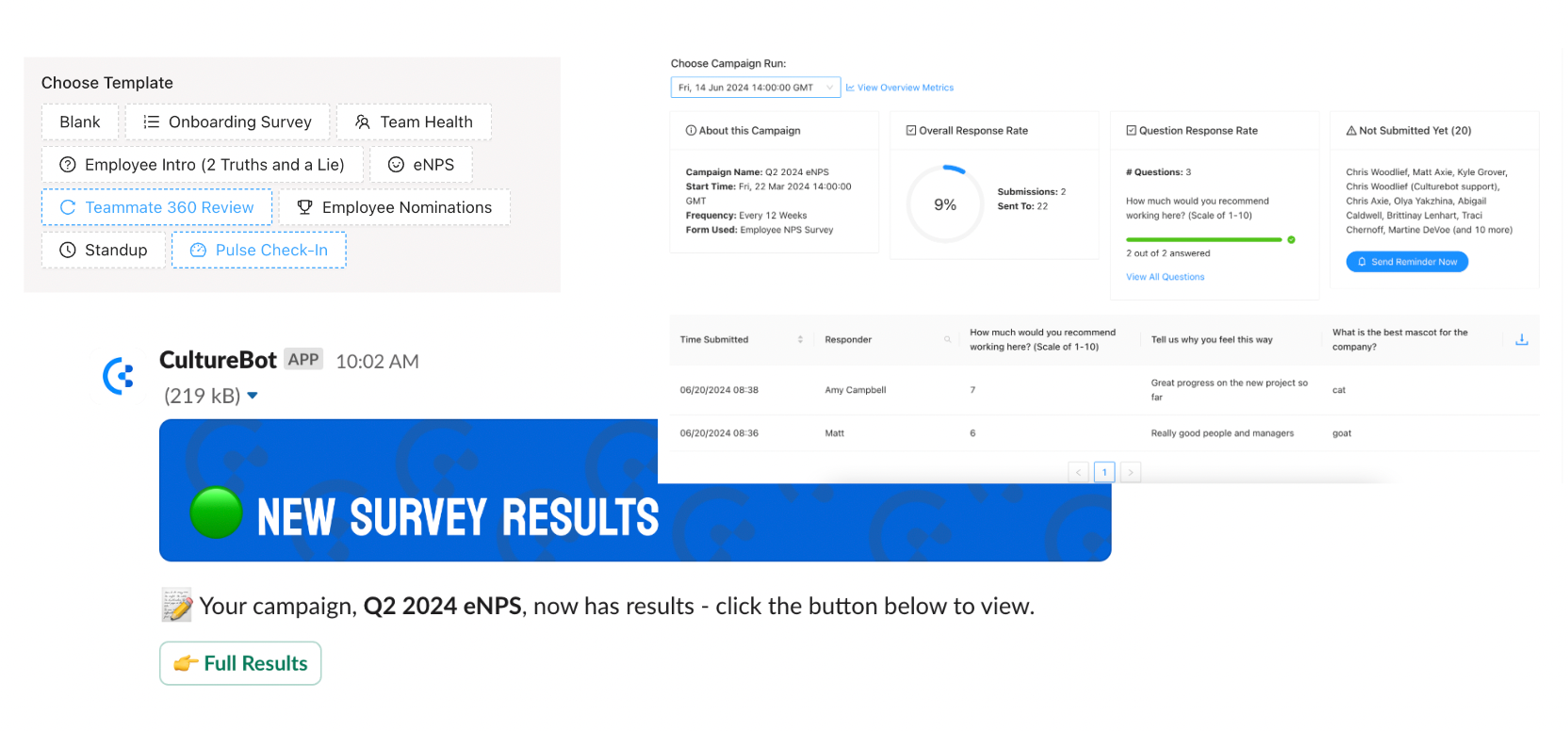
- Setting up a monthly team pulse survey in Slack – this is a super lightweight and easy way to directly message your employees via Slack DM once per month to ask them “how are you feeling 1-10?” (or anything you’d like).
- Creating a virtual feedback/suggestions box for “Feedback Friday” – feedback shouldn’t have to wait for performance reviews or formal cycles. Automatically solicit candid, anonymous feedback in realtime via Slack.
- Automating quarterly employee nominations – this is a great way to highlight the “rising stars” of your organization – and it doesn’t have to take barely any work at all to setup inside of Slack.
- Incentivizing survey replies with reward points – a great way to get your employees to respond to the questions you need answers to is by giving them points (that they can then redeem for small gifts you’ve setup)/
- Reactions/engagement reporting – understand exactly how much engagement you’re driving by way of the number of reactions employees are adding to their shoutouts, water cooler posts, and birthday/work anniversary/DEI celebrations.
#4 Meeting employees where they are from day one
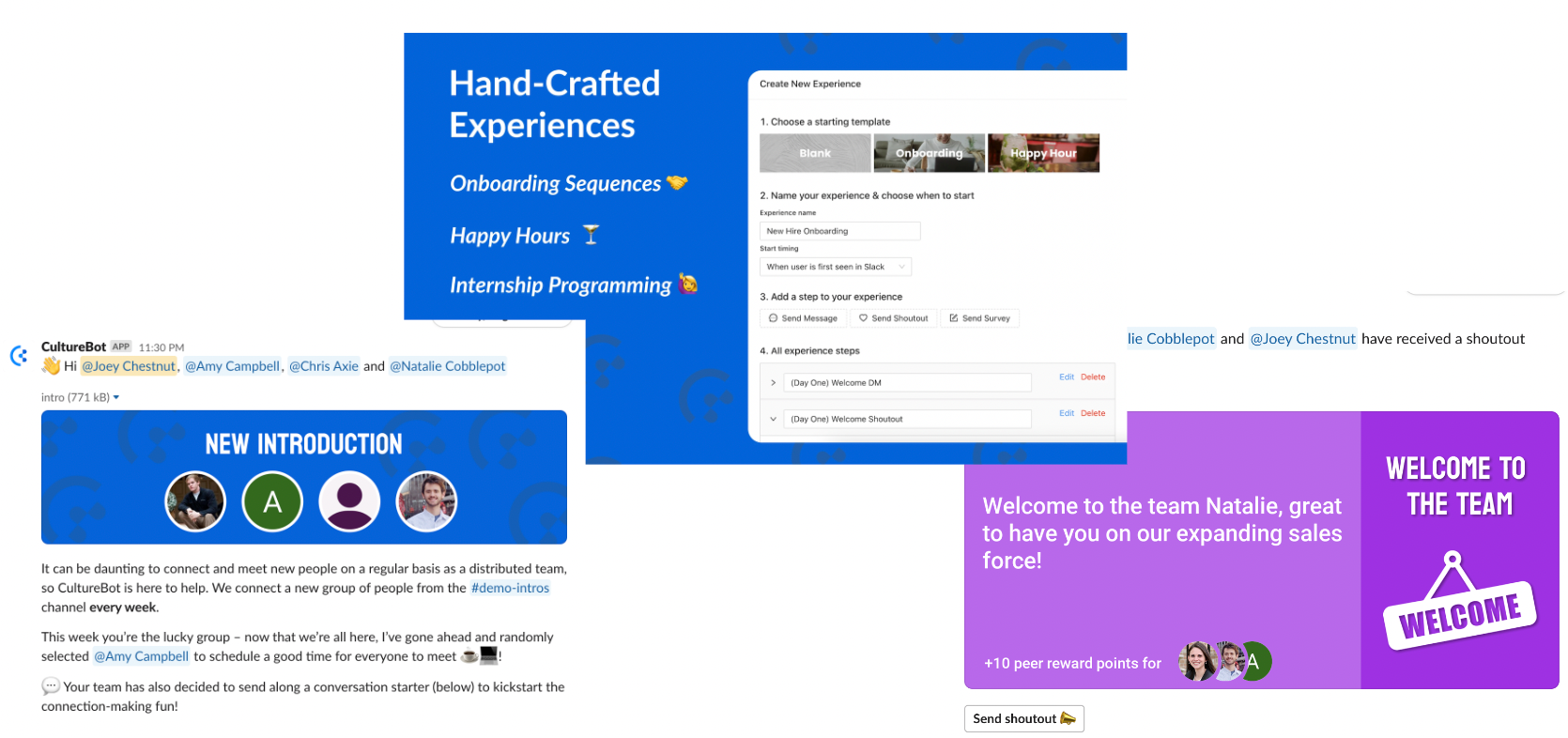
- Setup a predefined & automated onboarding flow for all new hires – this is a great way to give your new hires a 10/10 experience on day one – make sure they feel like they’re getting the attention and information they need. CultureBot can automate this so it looks personalized and so that you don’t forget.
- Welcome new hires on day one with a fun “get to know you” quiz – “where did you grow up?” “who is your favorite sports team?” “mountain or beach vacation?” simple questions – but helpful in knitting the initial social fabric of your new remote hire into the organization. Automate questions like these that do directly to the new hire to fill out via Slack, and get shared out to a channel of your choice for others to read.
- Automatic checking in with new hires at important milestones (30/60/90 days) – similar to the automations above, it cannot be stressed how important feedback is at these critical milestones in your new hire’s role. Automate these to go out via Slack and when employees submit their responses, you’ll get the results via Slack DM right away.
- Automatically introducing new hires to existing remote employees – setup an intro pairing that alerts new hires to start meeting others in the organization. Intros can automatically sync calendars as well to make the scheduling as easy as possible.
Phew! That’s a wrap. It’s my sincere hope that you see the value and ROI of investing in your remote team’s core experience (and culture) with an employee engagement solution. Click here to schedule a time with our team to learn more about how you can lift your team’s engagement.
Cheers ????,
Oswald R.






